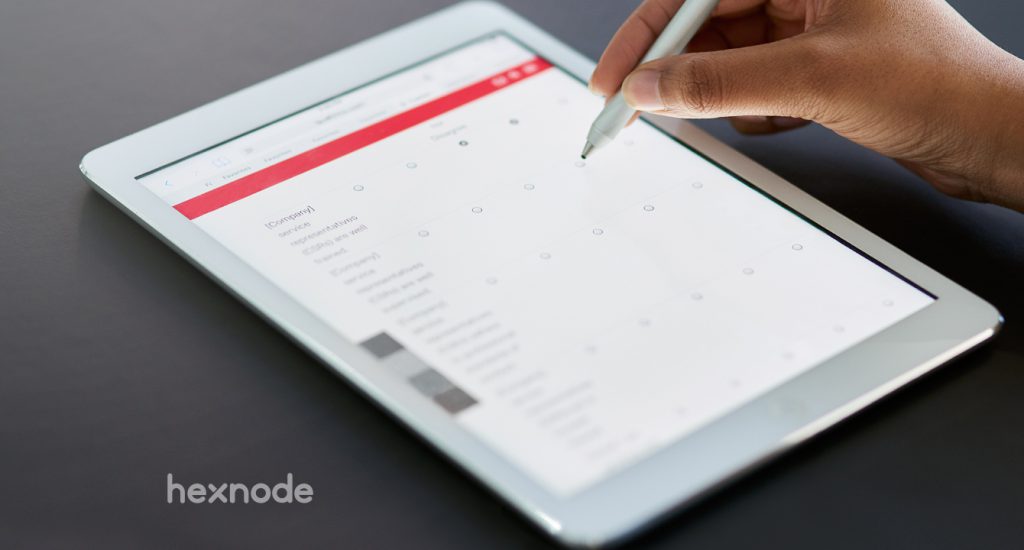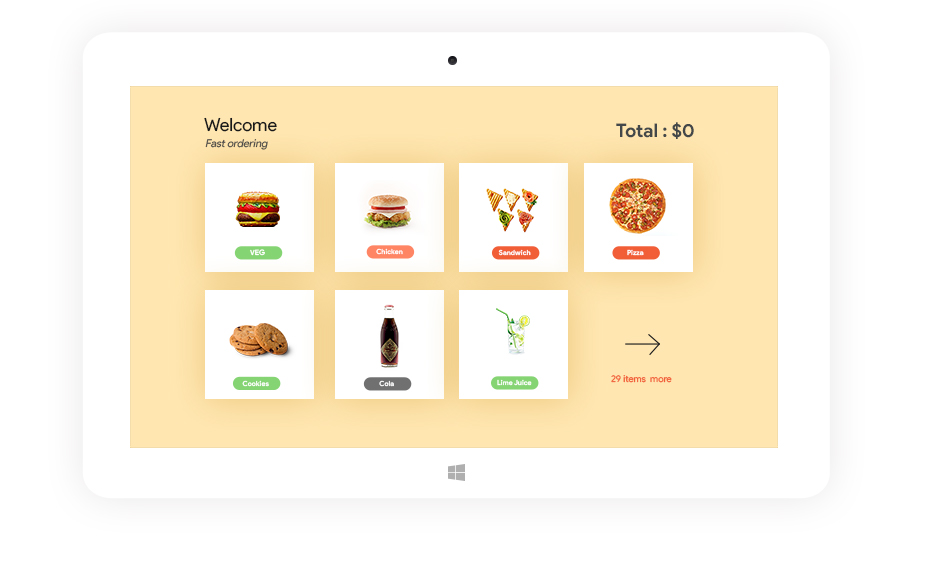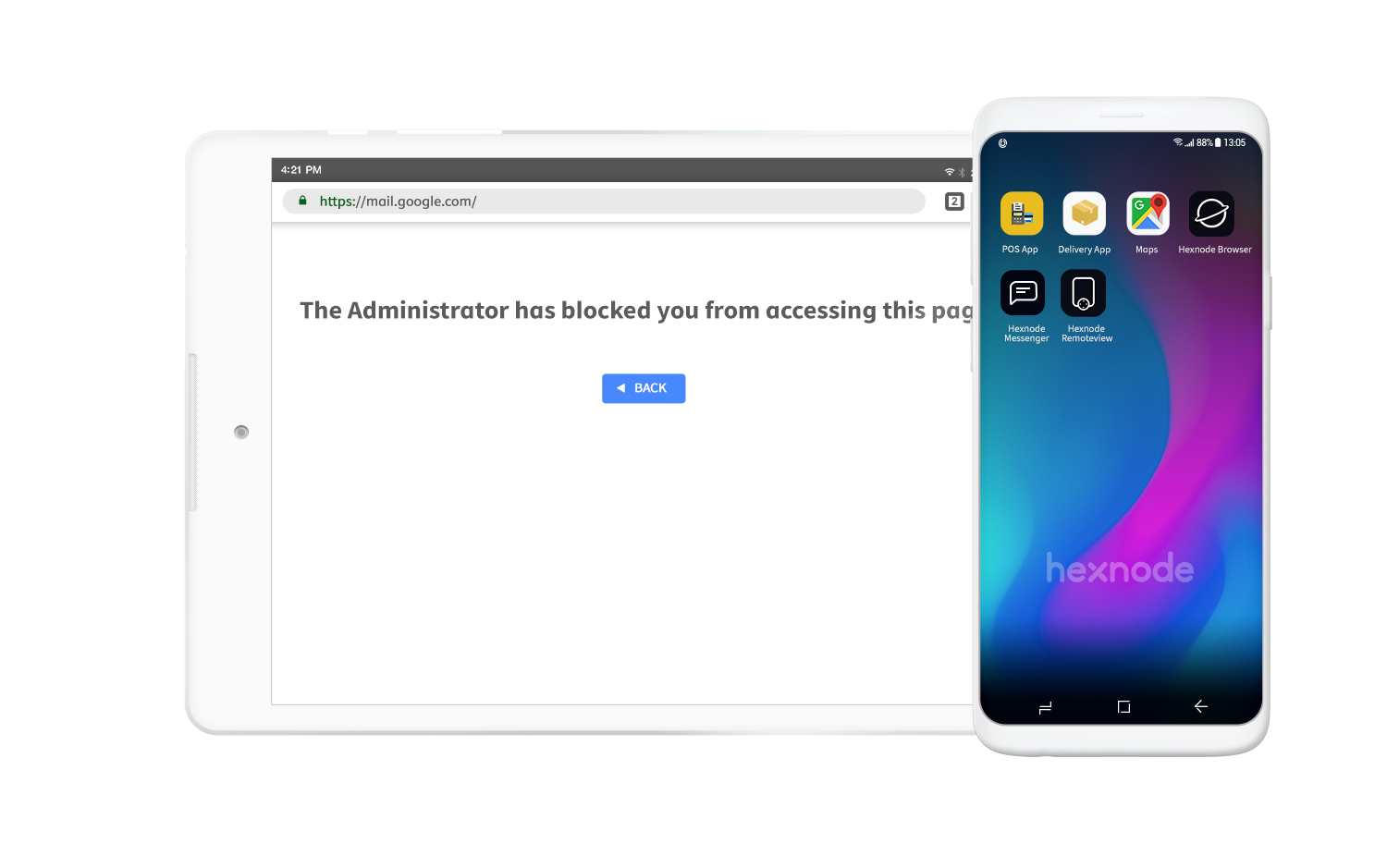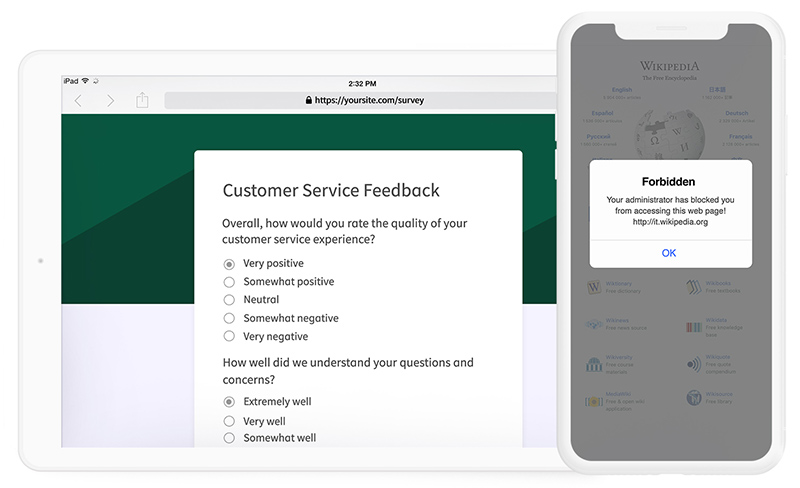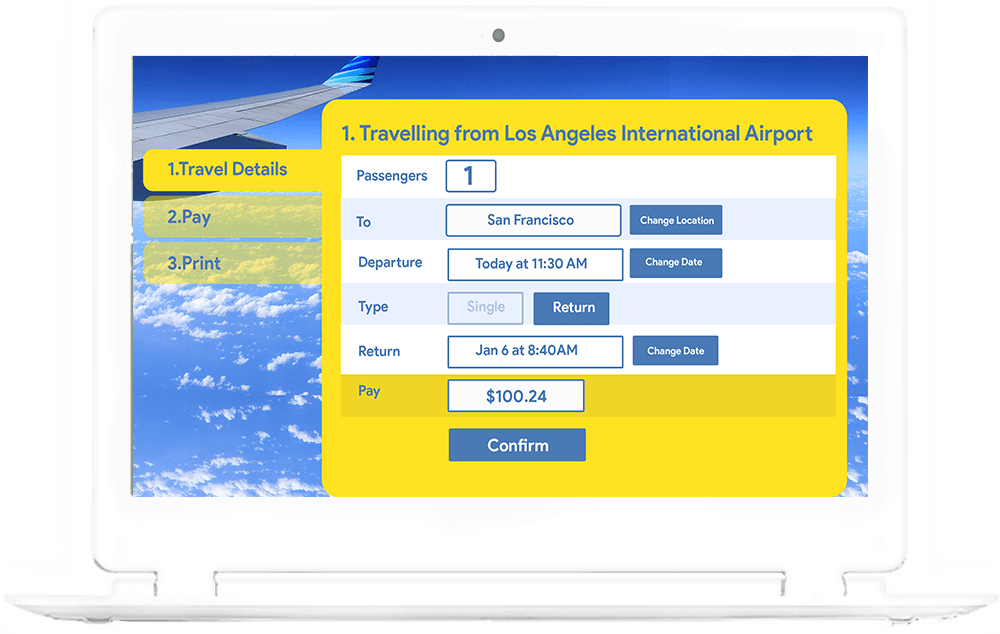Businesses nowadays are looking for useful tools that would help them drive their productivity and sales through the roof. A web-based kiosk is one of them.
A web-based kiosk can be set up on any device (Android/iOS) that could run a web browser and has an active internet connection. The key functionality of the kiosk is to control the usage of the internet and its resources in a particular device through a browser lockdown.
Browser lockdown, as the name suggests, implies the locking down of the browser by allowing access only to pre-selected or whitelisted URLs determined by the admin. It is ideal when the device in question is only required to handle a few websites or links.
Now that the definition is out of the way let us discuss how you can implement this in your organization.
One of the ways in which you could deploy this feature in your organization is through lockdown browsers. Many of these come with key restrictive features and is quite effective to some extent.
But, when it comes to large companies that issue thousands of devices to its employees, a better way to implement web-based kiosks would be through an MDM solution. Many MDM solutions out there do provide a lockdown option. And to bulk manage their devices, these large companies are bound to have some sort of MDM solution in place. So, it’s a happy coincidence!
Hexnode MDM and Web-Based Kiosks
Hexnode MDM added a feature called Website Kiosk to its arsenal a while back. This feature allowed the admin to efficiently monitor and lock down the device, by granting permission to the user to access only those websites which are chosen by the organization. Anything apart from these chosen websites would be deemed beyond the device’s scope. So, essentially any device enrolled under Hexnode MDM could be transformed into a web-based kiosk.
This cross-platform functionality is now available in Android and iOS.
Setting up Website Kiosk on Android devices.
On an enrolled Android device, you can use the website kiosk feature by creating a policy and associating that policy to one or more devices. As simple as that. While creating the policy, you can set specific criteria like setting the whitelist of websites. This would determine the degree of freedom you provide to the user.
The website kiosk feature allows the use of a safe browser(Hexnode Lite browser, Hexnode Kiosk Browser, or any other browser). It permits multi-tabbed/single-tabbed browsing, and only the whitelisted websites can be availed in this mode.
Hexnode also offers means to configure the browser settings such as toolbar customization, theme, appearance, a scheduled refresh of web apps, browsing history, and cache clearing, etc. These configurable features aid in augmenting the user experience.
Setting Up Website Kiosk on iOS devices
The setting up process is similar to that of an android device. On an enrolled iOS device, the web-based kiosk feature allows the opening of websites using either Safari or Hexnode browser. In an iOS device, a user may access all the whitelisted websites by checking the bookmarks on the Safari Browser.
Hexnode also offers some advanced settings to customize the Hexnode browser. These include allowing certain browser settings to be controlled such as disabling the close and back button, pinching the web page to zoom, and reloading web apps after a specified time period.
How can a web-based kiosk be useful to you?
Obviously, there is no limit to what you can do with your web-based kiosk. But here are a few ways in which you can use this feature of Hexnode MDM to the maximum.
-
- Point of Sales: A device can be set up in lieu of an actual retail associate at the point of sales. Many institutions, from movie theaters to hotels and restaurants, use this iteration of a web-based kiosk to avoid delays and clutter.
-
- Task-Specific devices: In situations where the retail staff is vital to the functioning of an organization, a hybrid methodology can be implemented. For example, if a delivery executive for courier service is issued, a website kiosk enabled device. He would only be able to use that device to access whitelisted websites. This could ensure that the delivery executive remains productive when he is on duty. Another point to be noted is that, by using this methodology, the organization can also efficiently manage their telecom expense.
-
- Data Collection: Using a web-based kiosk enabled device to fill up forms is a pretty common practice. It’s widely used among commercial bank retail associates when they want to collect new customer information. The website kiosk feature available in Hexnode MDM comes with several advanced features that augment this particular practice. These features include setting up timely refreshes to deploy time outs and a browser history configuration which would automate the clearing of cache, browser history, and cookies.
-
- Showing agendas: During events or conferences, the web-based kiosk can be used to display the day’s agenda to the attendees. This would ensure better data security because all the information regarding the event/conference is shown on the secure device. This would also help the attendees to create a travel itinerary based on the agenda.
Bearing in mind all these facts and the increasing demands of organizations, the web-based kiosk feature has a lot to offer towards Enterprise Mobility Management.
While all this may seem daunting at first, a comprehensive MDM solution like Hexnode makes it a walk in the park, even for beginners.

